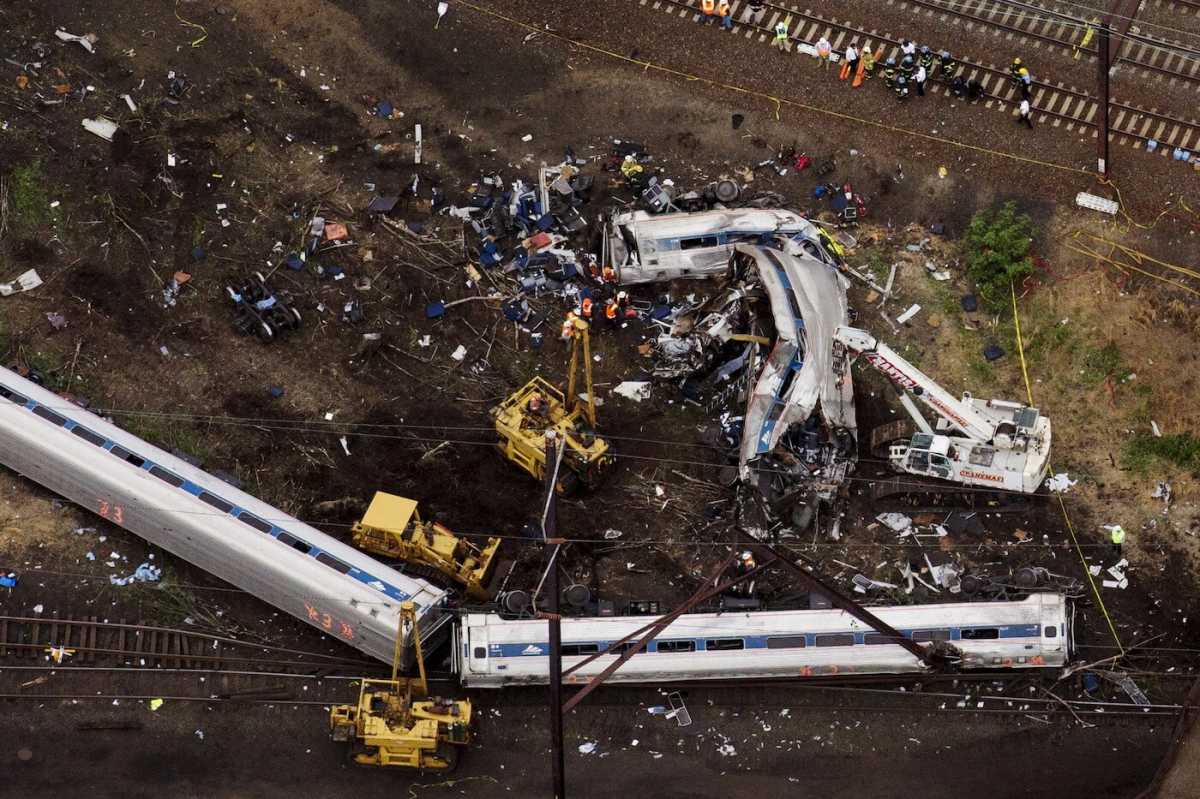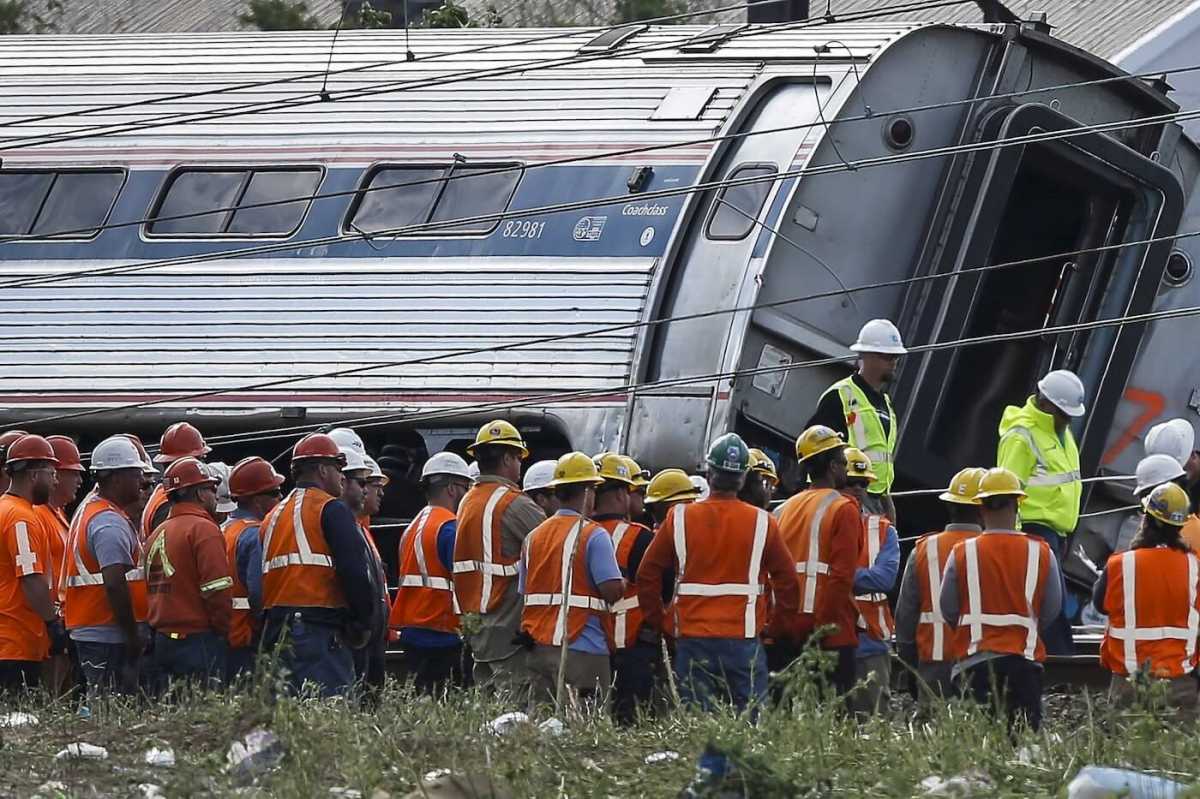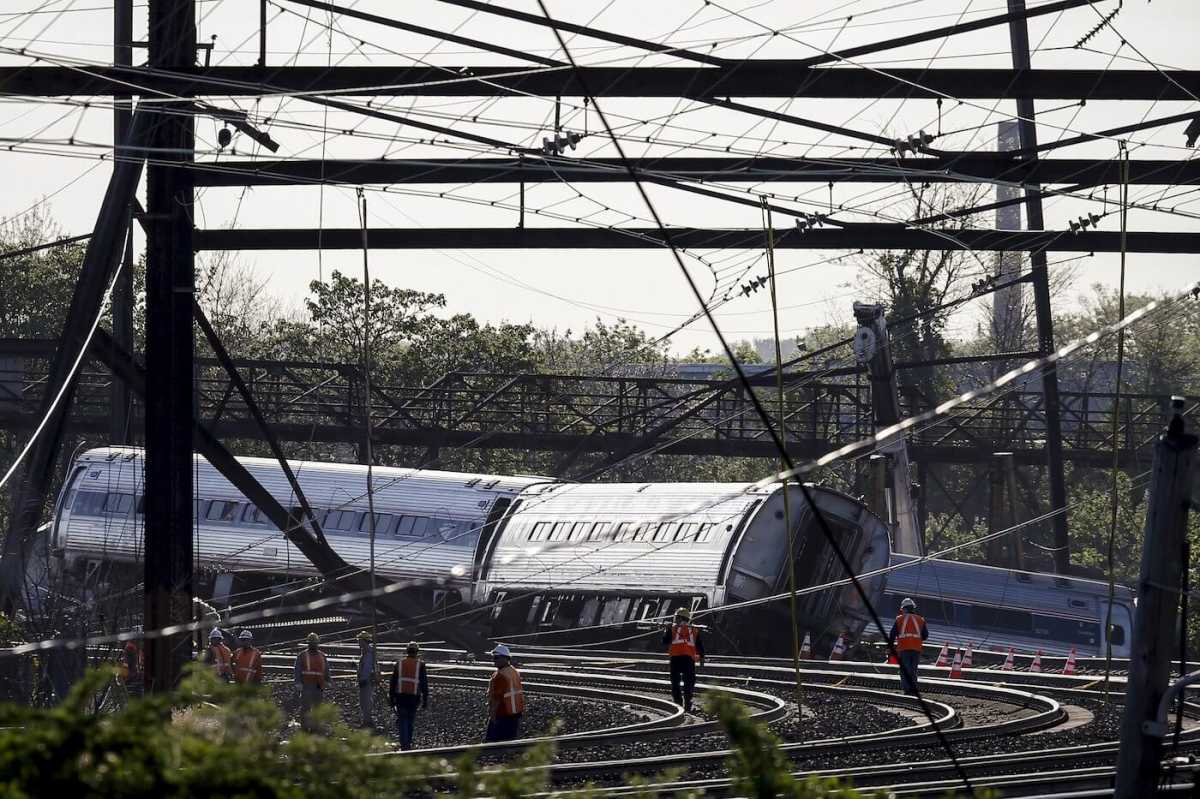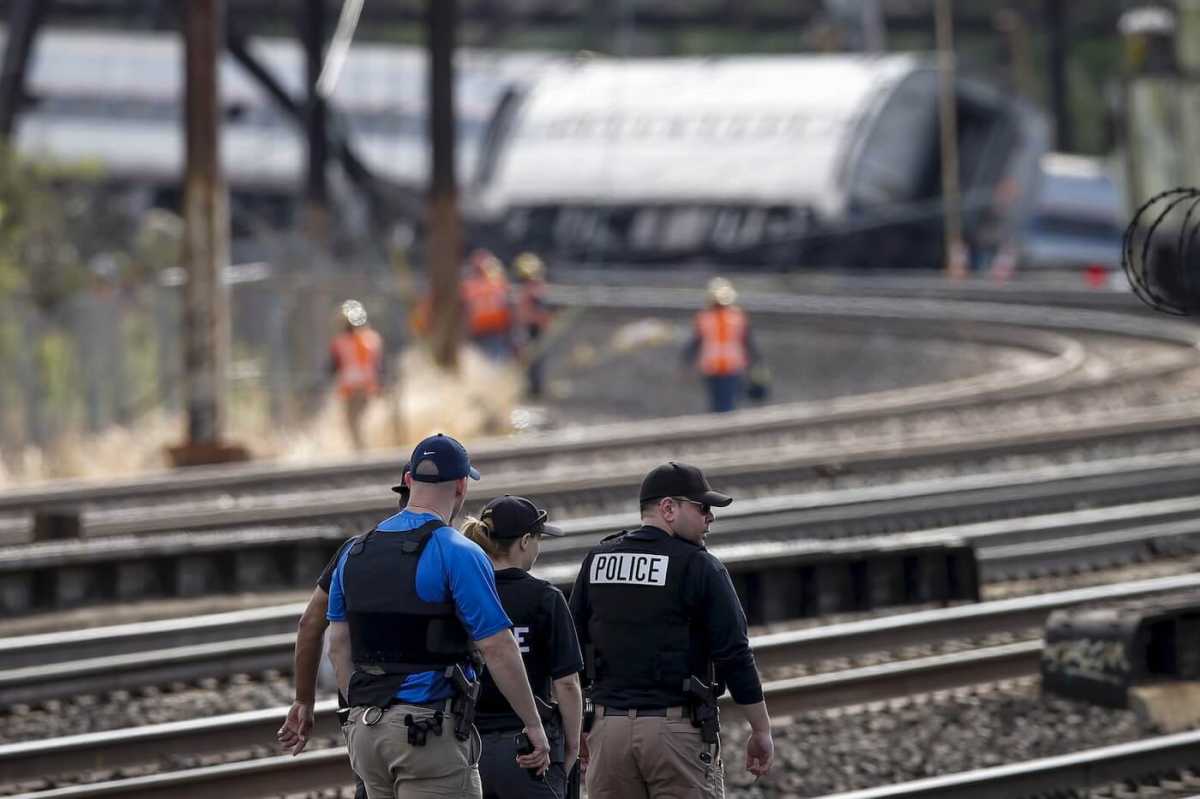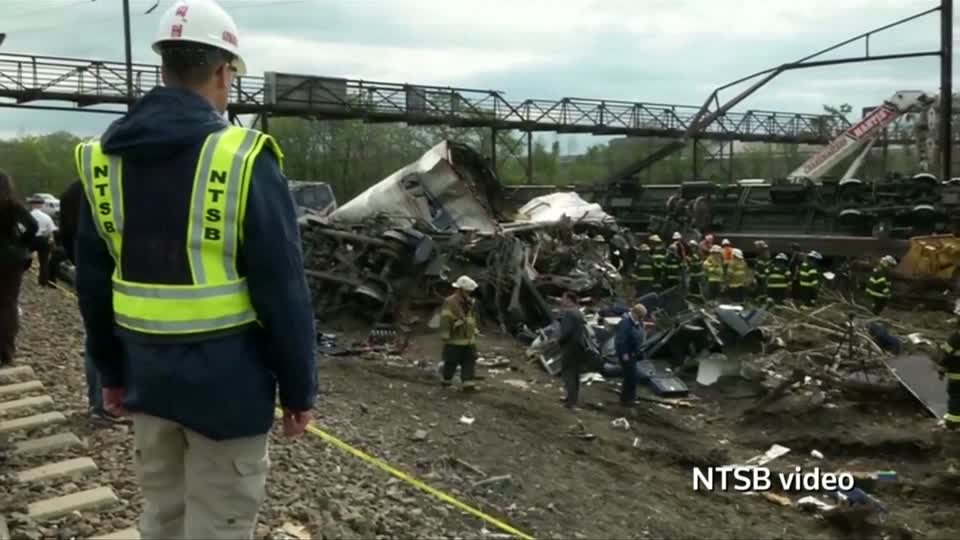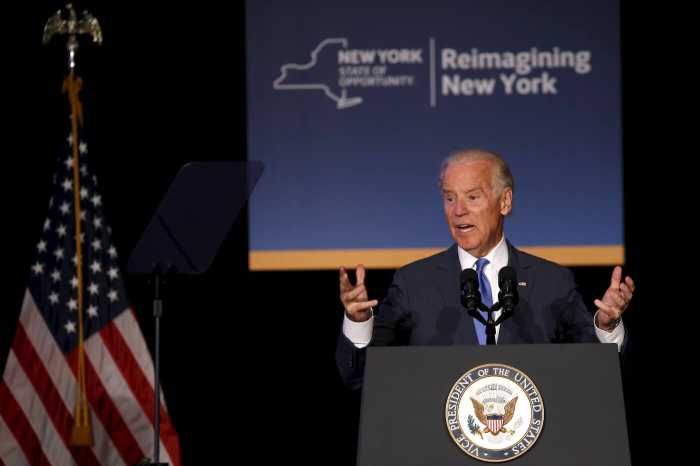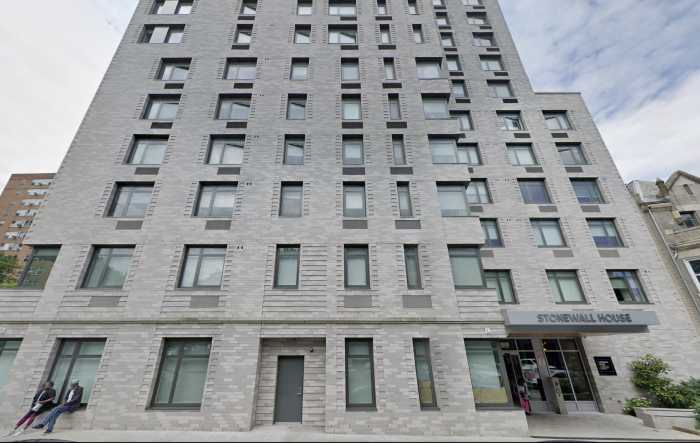By Patrick Rucker and Jarrett Renshaw
WASHINGTON/PHILADELPHIA (Reuters) – The commuter rail route where an Amtrak train left the track on Tuesday was not governed by an advanced safety technology meant to prevent high-speed derailments, investigators said on Wednesday. A system called “positive train control” (PTC) automatically slows or even halts trains that are moving too fast or heading into a danger zone. Under current law, the rail industry must adopt the technology by the end of this year. The investigation into the cause of Tuesday’s crash, in which seven people were killed, has only just begun but initial examination of the train’s data recorders determined the train was traveling 106 miles per hour (171 km per hour) in a 50-mph (80-kph) zone. It would have been impossible for a train to reach such speeds if PTC had been in place, officials said.
“Based on what we know right now, we feel that had such a system been installed in this section of track, this accident would not have occurred,” said Robert Sumwalt, a board member of the National Transportation Safety Board. Amtrak has begun installing components of a PTC system but the network is not yet functioning, federal officials said.
Amtrak officials did not respond to calls for comment.
Federal rules require the national rail network to have an operating PTC system by the end of the year, though many lawmakers have endorsed rail industry appeals for more time to comply.
In March, the Senate Commerce Committee voted to extend the deadline for implementing PTC until at least 2020. Both Republicans and Democrats supported the measure which will now go to the Senate floor. “This accident is exhibit A for ending the delays and getting positive train control in place,” said Senator Richard Blumenthal, a Connecticut Democrat.
The Association of American Railroads has said it wants PTC in place but blames logistical challenges like acquiring radio frequencies and placing transmitter towers for the delay.
“This is not off-the-shelf technology; it has had to be developed from scratch,” said Ed Greenberg, spokesman for the trade group.
Installing radio towers and other hardware at congested rail junctions, like the site of the Philadelphia accident, poses unique challenges, according to former and current officials.
PTC control would go as far as overriding a train conductor who was exceeding posted speed limits, said Joseph Szabo, who stepped down in January as administrator of the Federal Railroad Administration. “If there is a red signal you can’t pass it, if there is a speed restriction, it will slow you down,” he said of the override system.
(Additional reporting by Mark Hosenball, Andy Sullivan, Bill Trott and Timothy Gardner in Washington; Editing by Eric Beech and Lisa Shumaker)



